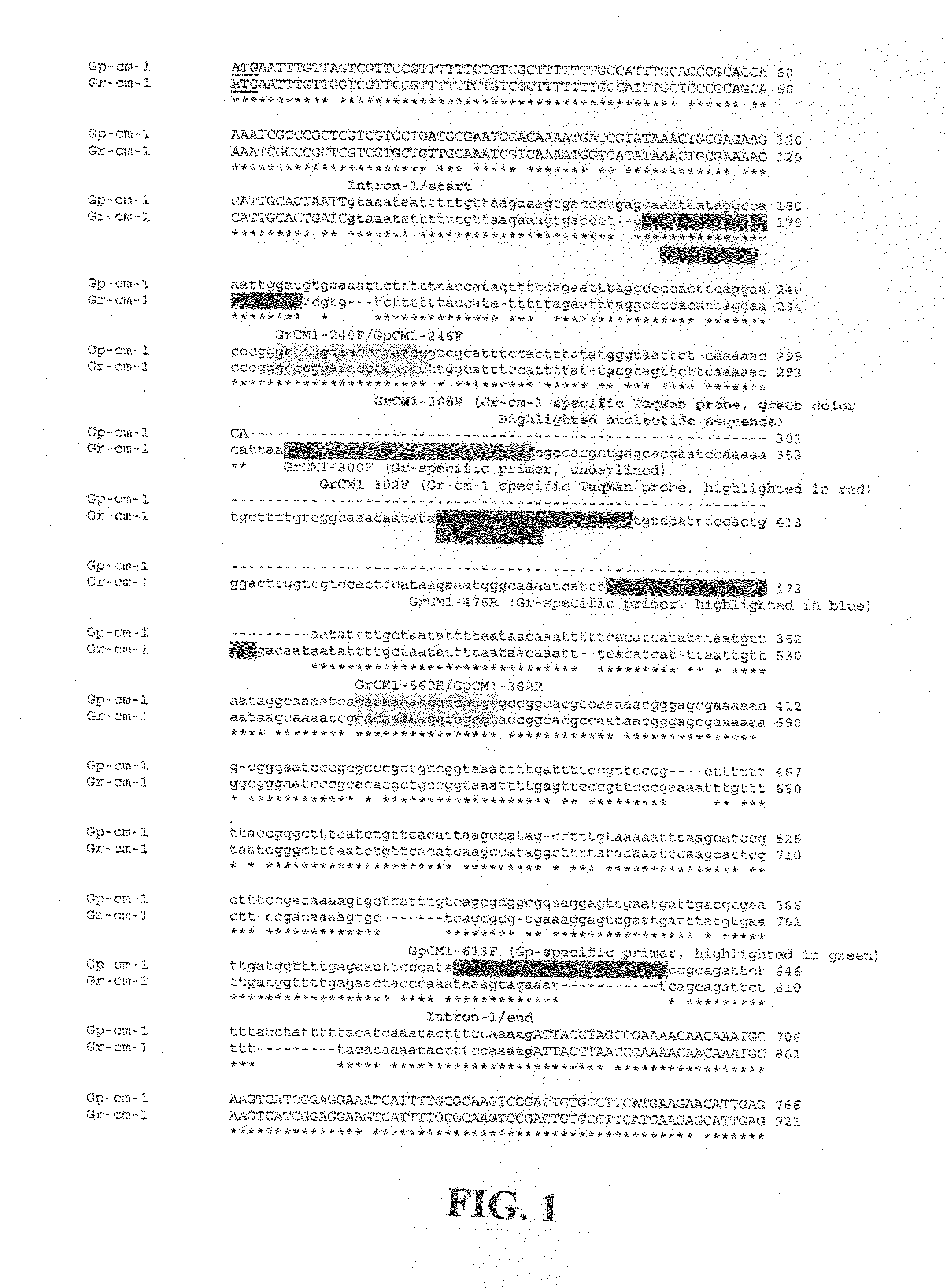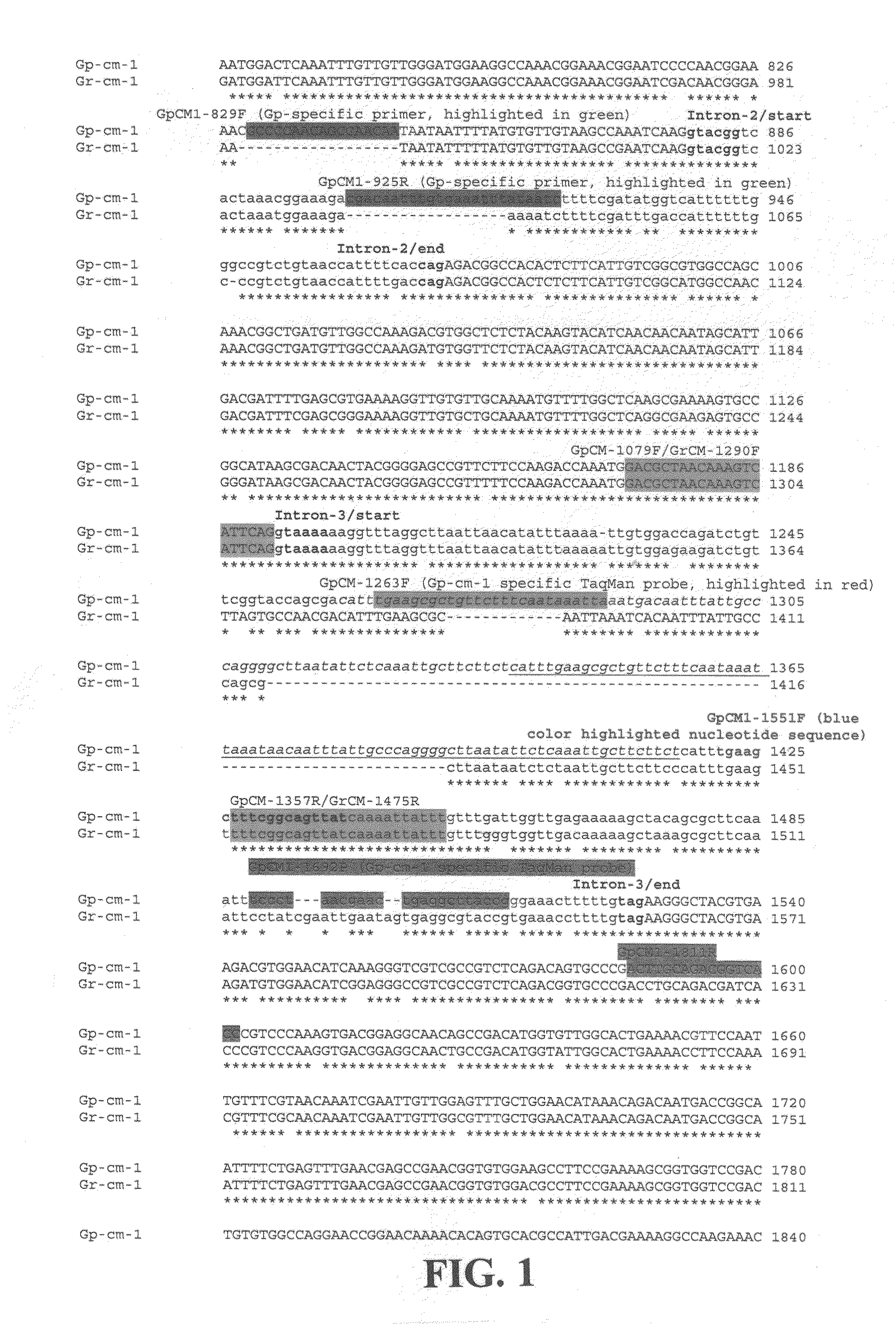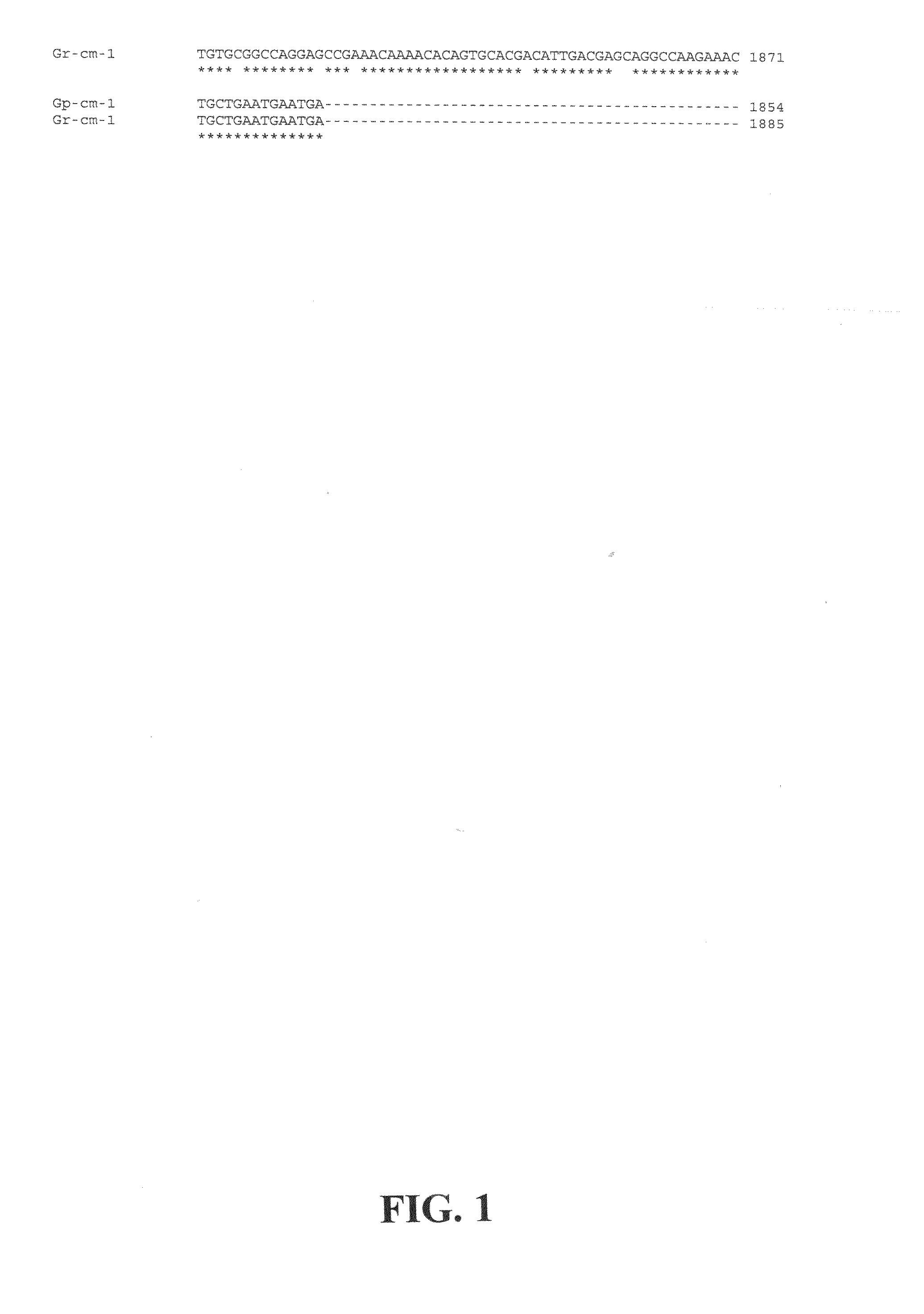Novel chorismate mutase gene from the potato cyst nematode globodera rostochiensis
a chorismate mutase and potato cyst technology, applied in the direction of nematocides, biocide, transferases, etc., can solve the problem of increasing the risk of the spread of nematodes into other potato producing states, reevaluating current quarantine practices, and the inability to rid root-infesting pests from contaminated soil
- Summary
- Abstract
- Description
- Claims
- Application Information
AI Technical Summary
Benefits of technology
Problems solved by technology
Method used
Image
Examples
example 1
[0105]Identification and Isolation of G. Rostochiensis Cm Target Gene
[0106]Gr-cm-1 is a parasitism gene that was found to be expressed exclusively within the subventral gland cells of the nematode. We isolated both the cDNA (Gr-cm-1, SEQ ID NO: 4, GenBank accession number EF437154; to be released) and genomic clones (Gr-cm-1A, SEQ ID NO: 1, GenBank accession number EF437152; Gr-cm-1B, SEQ ID NO: 3, GenBank accession number EF437153; to be released) of the chorismate mutase (CM) gene from G. rostochiensis.
[0107]Genomic DNA from G. rostochiensis was extracted from infective second-stage juveniles of the nematode. The nematode juveniles were lysed with proteinase K and heat treatment and nematode DNA was extracted using phenol and chloroform and finally recovered with ethanol precipitation.
example 2
DNA Sequencing and Analysis
[0108]Plasmid DNA containing the 1973 bp DNA fragment from G. rostochiensis was sequenced. Nucleotide sequences from G. rostochiensis and G. pallida were compared and aligned in our laboratory using the Bestfit and Pileup programs of the Genetics Computer Group computer package (Version 9.0)(Deverex et al. 1984. Nucleic Acids Res. 12: 387-395).
[0109]Comparisons between the sequences of the two Globodera species, G. rostochiensis and G. pallida, revealed 227 nucleotide differences within the approximately 1.9 kb region (this calculation does not include unique insertions in intron 1 of Gr-cm-1 and in intron 3 of Gp-cm-1; FIG. 1). Most of the nucleotide differences between G. rostochiensis and G. pallida were randomly scattered throughout the approximately 1.9 kb region.
example 3
Selection of Species-Specific Primers and the Development of Polymerase Chain Reaction Assays
[0110]Although the overall sequence identity is high between G. rostochiensis and G. pallida within this approximately 1.9 kb region (84% identity), selective PCR primer sites were chosen to distinguish these two Globodera species from each other using PCR (FIG. 1).
[0111]To obtain different sizes of PCR products from G. rostochiensis and G. pallida, common primers were selected from within intron 1 of genomic DNA from G. rostochiensis (Gr-cm-1; SEQ ID NO: 1) and G. pallida (Gp-cm-1; SEQ ID NO: 2). These PCR primers are specific to both potato cyst nematode species: GrCM1-240F (=GpCM1-246F): GCCCGGAAACCTAATCC (SEQ ID NO: 6) and GrCM1-560R (=GpCM1-382R): ACGCGGCCTTTTTGTG (SEQ ID NO: 7). The PCR products recovered from G. rostochiensis and G. pallida are 321 bp and 137 bp, respectively. Therefore, if a PCR product of about 300 bp is obtained, then the species is G. rostochiensis. A PCR product ...
PUM
| Property | Measurement | Unit |
|---|---|---|
| pH | aaaaa | aaaaa |
| pH | aaaaa | aaaaa |
| Tm | aaaaa | aaaaa |
Abstract
Description
Claims
Application Information
 Login to View More
Login to View More - R&D
- Intellectual Property
- Life Sciences
- Materials
- Tech Scout
- Unparalleled Data Quality
- Higher Quality Content
- 60% Fewer Hallucinations
Browse by: Latest US Patents, China's latest patents, Technical Efficacy Thesaurus, Application Domain, Technology Topic, Popular Technical Reports.
© 2025 PatSnap. All rights reserved.Legal|Privacy policy|Modern Slavery Act Transparency Statement|Sitemap|About US| Contact US: help@patsnap.com



